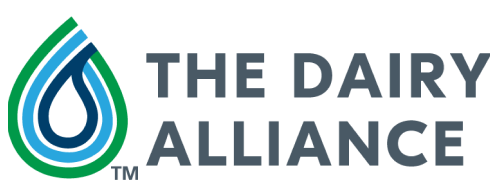The Importance of Milking Cows
When imagining a cow, you likely visualize a farmer on a stool holding a bucket as they milk a cow enjoying her cud. Regardless of if done by hand or through modern technology, this action of milking cows remains an important part of dairy farming in the United States today.
At dairy farms, the milking process begins when a heifer becomes a cow, a female bovine who has birthed a calf. After giving birth, cows produce milk for their young. If cows create milk because they have calves, shouldn’t milking cows only happen when the calves feed from them?
Well, no. The milking process begins with the birth of a calf, but it doesn’t simply stop whenever calves aren’t hungry.
The Importance of Milking Cows
Here are three reasons it is important for dairy farmers to milk cows:
Calves wean off milk very quickly. The first days are spent drinking colostrum, a very special and nutritious milk essential to a newborn calf’s health created by the mother. Once done with colostrum, the diet is switched to milk or a milk replacer. Dairy farmers provide a bottle instead of straight from the udder to keep track of how much the calves eat. Calves are introduced to a mix of milk and dry grains as they are weaned to eat their TMRs and water.
Following a healthy diet for their age, calves don’t need milk for as long as a cow produces it, so this excess milk is collected for human consumption. And once cows are milked, they quickly create more milk and need to be milked again. Dairy cows are breeds chosen because of the high amount of milk produced. Milking cows provide on average 8 gallons of milk a day per cow. Yes, an average means a cow may produce less milk, but it also means a cow may produce even more than that. No wonder cows are often milked two or three times a day!
It’s important to keep dairy cattle happy and healthy to maintain the dairy production of quality milk. For example, somatic cells (a mixture of milk-producing cells and immune cells) are vital in the milking process. Somatic cell counts are used universally to determine the health of the cow and the quality of milk. Also, reducing the weight on a cow’s udders is important for the cows’ welfare. In fact, cows enjoy the milking process, even having a favorite area in the parlor to be milked! Dairy farmers herd cows into the parlor, clean their udders with iodine, and attach suction tubes to gently pull the milk from the teats.
Dairy Cows Enjoy the High Life
While hard work for the workers on the farm, milking cows is a relaxing experience for the herd. A cow will want to be milked until two months before her next due date, and then she will happily return when her dry period is over. Why? Without an opportunity to enter a milking parlor, a dairy cow would produce lots of milk she’d have to carry throughout her day. If the dairy farm hopes to continue collecting quality milk, ensuring the cow can give milk is a top priority.
Interested in the milking process? Want to see a calf barn up close? To discover more about milking cows and the steps in place to keep your healthy dairy products safe, visit a dairy farm this summer! You can stay in and still visit a dairy farm with these virtual tours.





